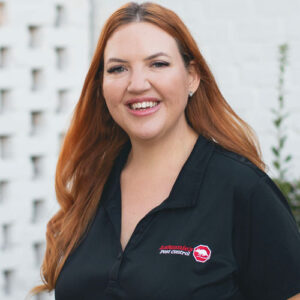
PHOTO: GLOBALP / ISTOCK / GETTY IMAGES PLUS / GETTY IMAGES
As noted in our 2025 State of the Industry Report, an increasing number of pest management professionals (PMPs) are adding services to strengthen their relationships with existing customers, reach new customers and augment revenue streams.
The first step is knowing when the time is right to expand. There’s a certain amount of luck and aligning of stars, but your chance for success increases when you go into the process with clear eyes.

King Jones
King Jones, owner of Naugatuck, Conn.-based CT Pest Solutions, proposes a practical perspective. “A pest control company is ‘ready’ to expand into offering add-on services when they have mastered their core services,” says Jones, who is also the immediate past president of the Connecticut Pest Control Association. “They should consider all aspects of adding these services: investment costs, profitability, resources, training, customer demographics and demand, scalability, and the new service’s relationship to the existing core services.”

Skye LaJaunie
Skye LaJaunie, co-owner of LaJaunie’s Pest Control, Thibodaux, La., underscores the importance of financial stability before funding new ventures, adding, “You are ready to diversify in other service lines when there’s enough to fund growing another ‘business within your business’ adequately.”
Pest Management Professional (PMP) Columnist Bobby Jenkins, owner of ABC Home & Commercial Services in Austin, Texas, suggests that most businesses willing to take the leap fall into one of two categories: those that have optimized existing operations and are ready to take on a new venture, and those facing stagnant or slowing growth in their market and are looking for a way to grow their bottom line and stand out from the competition.
A natural fit

Bobby Jenkins
Keep in mind that not all add-on services are created equal. Bobby Jenkins emphasizes the importance of choosing services that align with existing expertise and customer base. “I would differentiate between an add-on service such as bird control vs. adding on something such as handyman,” he explains. “Bird control is a more natural extension of the work pest management companies already provide, whereas handyman is a completely different service.”

Bill Dowd
Bill Dowd is the founder and CEO of Skedaddle Humane Wildlife Control, which offers several add-on service franchises to PMPs and other home services specialists. He notes that in addition to bird control, PMPs easily can integrate attic restoration and insulation, wildlife opportunities and even holiday lighting into daily routes. However, he suggests having separate teams perform the services who are cross-trained to help with general pest control, rather than the reverse, so there is little interruption to current services.
“As PMPs, we’re in and out of attics every day with general pest control,” Dowd notes, “so the service overlap makes sense.”
Bobby Jenkins’ brother Dennis, also a PMP columnist and owner of Lewisville, Texas-based ABC Home and Commercial Services of DFW, advises choosing each service based on proof that it is needed.

Dennis Jenkins
“What is in your area? What do your customers need? What can be done easily with your existing services, vehicles and equipment?” he asks. “As I look at distribution maps for fire ants, for example, their spread continues to increase. So does the opportunity. Treatment for fire ants can be incorporated into your regular service using existing vehicles and personnel without making any big changes. You give your customers the use of their yard again and make a better income for your company and your technicians.”
Before you branch out, LaJaunie advises, talk to your accountant and insurance provider to ensure you make the right financial and liability decisions from the start.
“As entrepreneurs, we can become easily distracted by a new challenge or opportunity,” she adds. “I personally have been afflicted with ‘shiny thing syndrome’ in my career, and I would caution every PMP to remember that time, energy and capital are limited resources and should be deployed strategically.”

Skedaddle Humane Wildlife Control ensures technicians at its corporate and franchised offices are ready to work on roofs and tight spots alike. PHOTO: SKEDADDLE HUMANE WILDLIFE CONTROL
Branding and integration
Expanding as a division vs. a separate entity each has pluses and minuses. Bobby Jenkins is a proponent of keeping services under an umbrella brand.
“All of our services fall into pest, lawn, mechanical and home improvement divisions,” he explains. “For example, air-conditioning falls into the mechanical division while tree trimming falls into the lawn division. We have successfully built our new services on the back of the relationship and great work our pest management technicians provide for their customers. Their relationship and credibility make it much easier to recommend a new service. The customer trusts our specialist and our company that the new service is needed, and that ABC will do a great job.”
Dowd notes leveraging an existing brand specialized in the add-on work — like Skedaddle — also can have benefits. “The name is already known for that service, and the franchise model makes it practically turnkey,” he points out. “You can keep your pest control business exactly the same with name and identity; you just now have a new revenue stream and an immediate answer to general pest control customers in need of, say, a wildlife technician: ‘We have a wildlife division and can get you scheduled right away.’”
Specialization and expertise

Pete Schopen
Whether cross-training existing employees or hiring new staff, PMP Columnist Pete Schopen, owner of RV There Yet Pest Control Consulting, emphasizes the need for thorough training when venturing into specialized areas like bird control. He learned this firsthand while working for his late father, Pete Schopen Sr., as a young technician at Mid Central Pest Control in Algonquin, Ill. For a year, they offered bird repellent services inside highway billboards.
“I had to learn harnesses and climb 200-foot signs,” Schopen recalls. “It was not comfortable, but I knew I couldn’t make my technicians do it if I couldn’t do it. After a year, we didn’t make money — simply because we branched off into something with little training or expertise.”
The experience made him more careful about adding services as the former owner of McHenry, Ill.-based Schopen Pest Solutions, now OPC Pest Services. However, he notes that offering ceiling tile sanitization services became easy and profitable while helping to stave off insect and rodent populations.
“Find a need, fill a need where you can,” Schopen advises. “I recommend gutter cleaning, garbage can cleaning, and even dog excrement removal, which is perfect for fly control.”

Years ago, Pete Schopen was hospitalized with histoplasmosis because he cut his hand and tore his glove during a pigeon roost cleanout. Take every precaution when offering this public health service. PHOTO: BIRD BARRIER AMERICA
Patience and persistence
Building awareness for new services takes patience and consistent effort. “It takes time for the market and your customers to understand that you now offer this new service,” Bobby Jenkins cautions. “You need to be consistent in your messaging and keep telling your new story over and over before your customers remember you offer the new service.”
Schopen says to give it at least 12 months to catch on, although 18 months is better. “Unless you’re bleeding out the whole time with no traction, you should give it a year to perfect, and then if you’re still not seeing an uptick three to six months later, you should probably move on.”
Dowd says a good rule of thumb is to start with two service trucks and four staff to give the service a chance to ramp up. “Also, underpromise and overdeliver,” he says. “If you say you’ll be there Tuesday and don’t arrive until Wednesday, there’s already a strike against you. It takes nothing to say, ‘We will be there this week and give you a head’s up as soon as we can.’ Then, when you arrive Wednesday, you’re already the hero.”
King says if a service doesn’t catch on, don’t discount any lessons you can learn from the experience.
“Sometimes it’s just that the initial idea or model won’t fit in with your existing core services,” he explains. “Before giving it up, we identify why it’s not working and how to make it fit our organization better. Sometimes, that’s all you need to make it solidify as a service offering.”
A specific and strategic plan around sales, lead generation, costs, personnel, pricing and profitability is key to success. And then, LaJaunie says, “be prepared for the plan to blow up.”
“Even the most well-laid plans of launching a new service line are always subject to ‘key man risk,’ which means your key person who is trained to perform the new service can turn over at any time, causing a business interruption in that service line,” she explains. “Until you can scale to multiple team members in that service line, the key man risk will be something you’ll need to be prepared to experience.”
Jones offers a final piece of advice: “I think add-on services can be a great benefit to many pest control companies; however, I would advise also staying true to your company’s vision and not letting the ‘shiny objects’ aspects of add-on services distract you.”
Leave A Comment